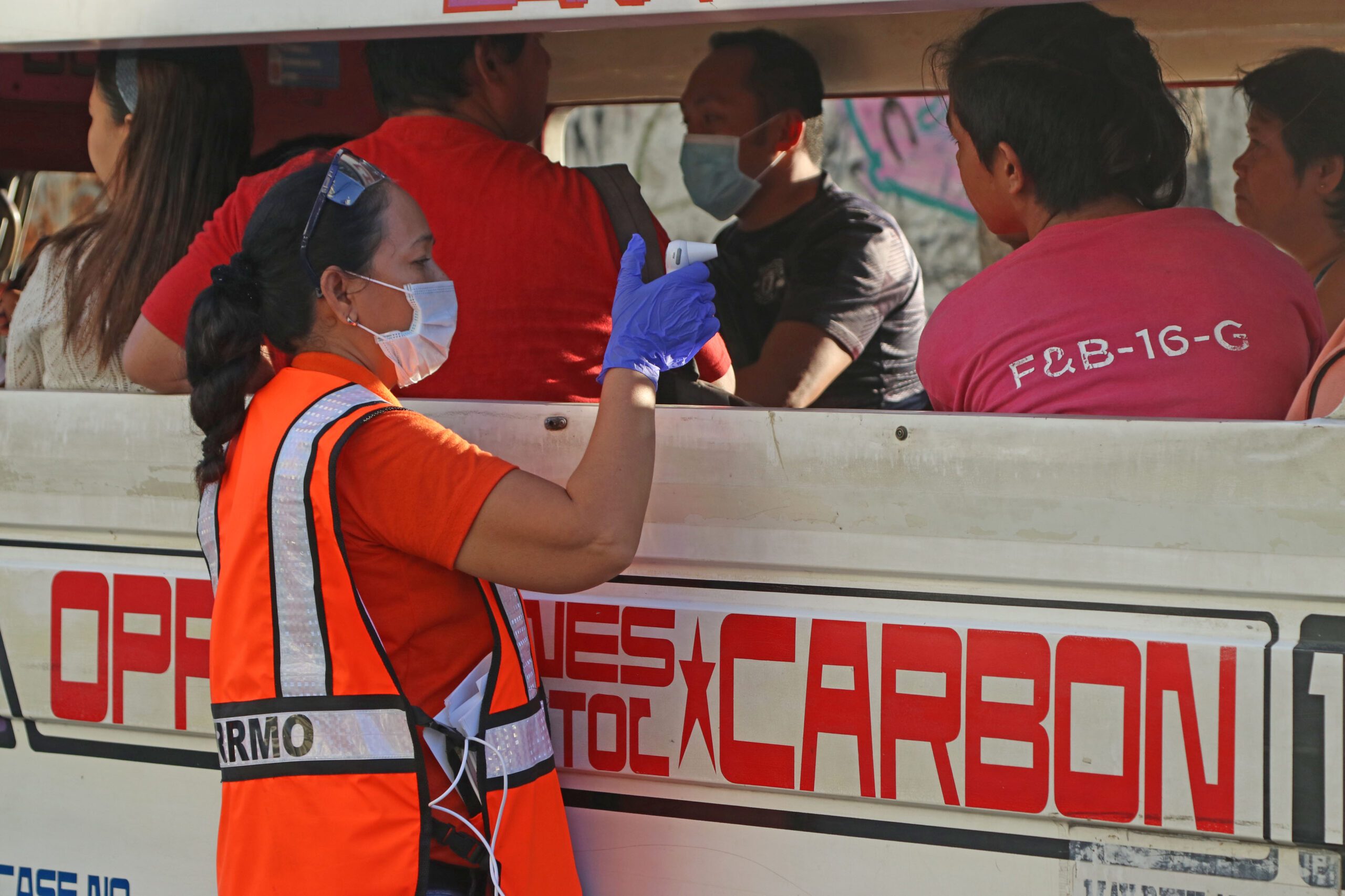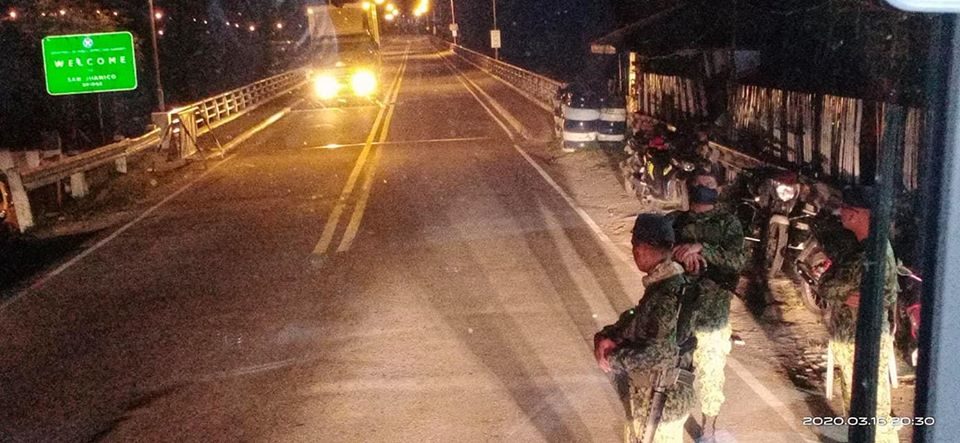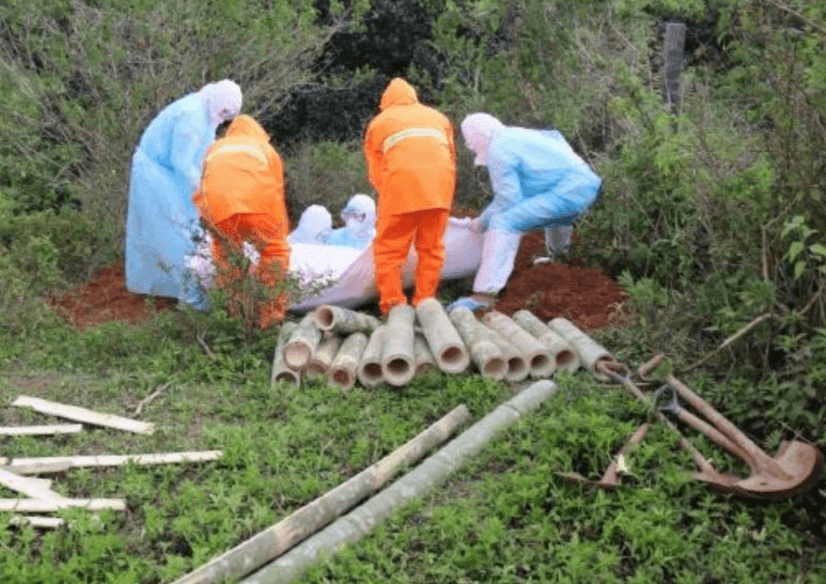SUMMARY
This is AI generated summarization, which may have errors. For context, always refer to the full article.

MANILA, Philippines – Outside Metro Manila provinces, cities, and towns are doubling efforts against the coronavirus despite zero or low number of confirmed cases in their areas, reflecting fears that some cases are undetected because of the shortage of test kits in the country.
In the isolated Mindoro island, a village in Calapan City, Mindoro Oriental, was placed under “strict quarantine” following the the death of an elderly woman from respiratory failure. She was not tested and no specimen was taken.
“Although she was not a confirmed COVID-19-positive patient, we consider her a highly suspicious PUI (person under investigation),” Calapan City Mayor Arnan Panaligan said in a Facebook post.
The Department of Health (DOH) has not reported a confirmed case in the island of 1.3 million people, but there are fears the elderly woman’s grandchild, who returned from Manila with fever, might have been a carrier of the disease.
In Lanao del Sur in Mindanao, government workers did not take their chances when a person under investigation for coronavirus died at the Amai Pakpak Medical Center in Marawi City. They gave the victim a proper Muslim burial, but treated the body like it was positive for coronavirus. They wore hazmat suits and skipped the full washing and ablution of the cadaver as normally required in Islamic rites.
It turned out, they were right having done that. The DOH belatedly confirmed that the victim tested positive, the first in Lanao del Sur. The entire province with over 1 million population has been placed under community quarantine.
‘Good to close borders early’

Everybody has to play it smart, said Edsel Salvana, director of the University of the Philippines Institute of Molecular Biology. He welcomed moves to put more areas around the country in lockdown regardless of the number of confirmed cases.
“It’s a good move because if you see one and don’t know where it came from, it’s better to be safe than sorry. At the same time, there will be more potentially infected people coming from outside, so you can try to prevent that by closing [the borders] early,” Salvana told Rappler.
Cebu province, with one confirmed case, was placed under community quarantine, which orders its almost 3 million population to observe social distancing in public transport. The measure includes the closure of internet cafés and cancellation of social gatherings and sports activities.
Cebu Governor Gwendolyn Garcia said the province must do what Metro Manila failed to do in the beginning. She appealed to her constituents to follow orders to stay at home, warning that the province will not have enough facilities if the situation escalates.
“This virus can be overcome, but only if there is a minimum of movement,” Garcia said.
She said the provincial government would be aggressive in tracing the contacts of the first confirmed case in Mandaue City and would reveal the identity of the victim to the media so that suspected contacts could immediately go into quarantine.
The entire Davao region, also with one confirmed case, has closed its borders but provided several exemptions to allow business to continue. The region is home to almost 5 million people.
Leyte has no confirmed case but has 10 persons under investigation for the disease. Governor Leopoldo Dominico Petilla has placed its population of 1.7 million under a month-long “general community quarantine.” All borders, ports, and boundaries of Leyte will be monitored, and non-residents will be denied entry. Health workers and other frontliners will be exempted while cargo vehicles bringing in essential goods and supplies will be allowed.
The province that suffered Super Typhoon Yolanda in 2013 is hoping to be spared. “We have gone through a lot. [We had] Yolanda. [We had] earthquake. But we have never been in a situation like now, wherein we need to contain within our inner selves and we make amend with ourselves also. The only way to survive is to discipline ourselves,” said Vice Governor Carlo Loreto.
More tests urgent

Still, local officials are demanding more tests to be conducted, especially as the number of persons under investigation (PUIs) and persons under monitoring (PUMs) for coronavirus symptoms has been increasing.
The recent death of 3 persons under investigation in Davao region has caused some panic. Their specimens were sent to the Research Institute for Tropical Medicine (RITM) in Manila but results have yet to be released as of this posting.
Without enough tests, many local government units are fighting blindly against coronavirus. It is urgent in the Bangsamoro region, said Interior Minister Naguib Sinarimbo.
“There is a growing fear that the virus may have spread widely undetected, given that some significant cases are linked to BARMM (Bangsamoro Autonomous Region in Muslim Mindanao),” he said.
Sinarimbo said they had made the appeal to the DOH. There are concerns that the couple from Rizal, the country’s first cases of local transmission, who died from coronavirus might have infected relatives from Lanao del Sur. The Bangsamoro region is also racing to trace 215 participants of a Malaysian gathering linked to clusters of cases abroad.
“Now we also have an evolving frontline in the island provinces of returning residents from Sabah, Malaysia, who may also be carriers of the the virus. So we need to have the test conducted to as many as possible for our PUIs so that plans and policies may also be solidly anchored on facts and not just fear,” Sinarimbo said.
Salvana said it’s hard to say how many undetected cases the country has. “Hopefully it’s not many since we intervened early,” he said.
The RITM, until recently the only center that could conduct tests, can perform 450 every day. The 4 new laboratories in the Philippines just approved by the World Health Organization have 100 test kits each for now. – with a report from Jazmin Bonifacio
Add a comment
How does this make you feel?
There are no comments yet. Add your comment to start the conversation.